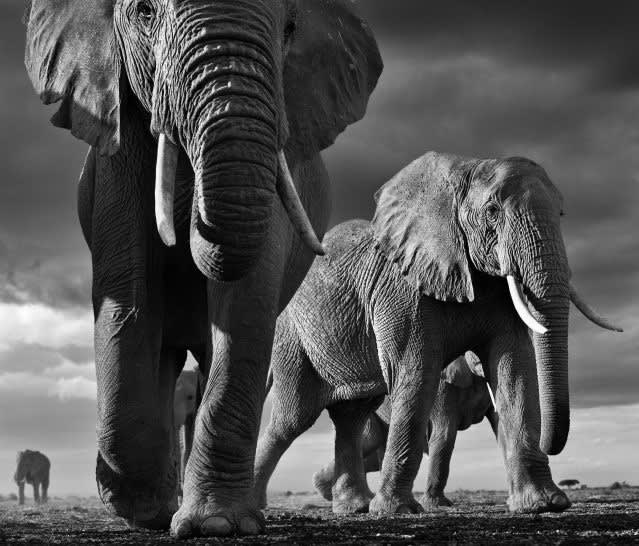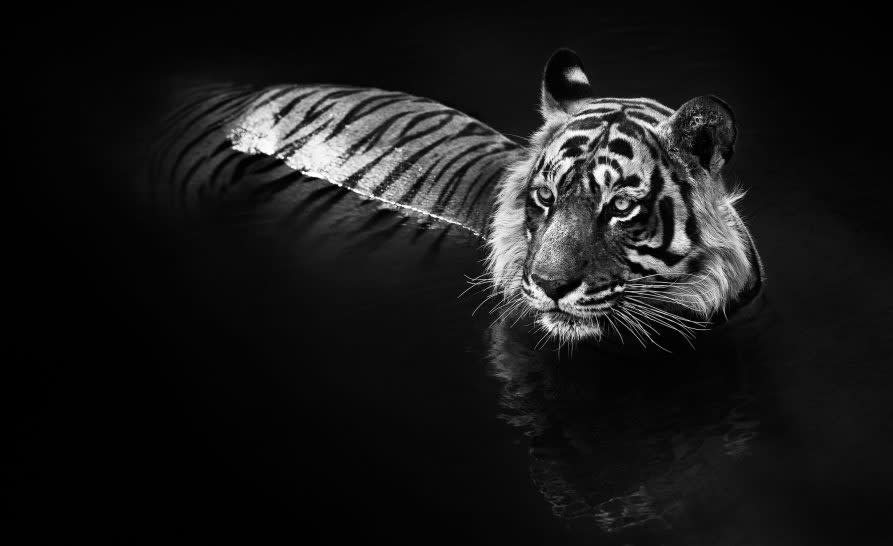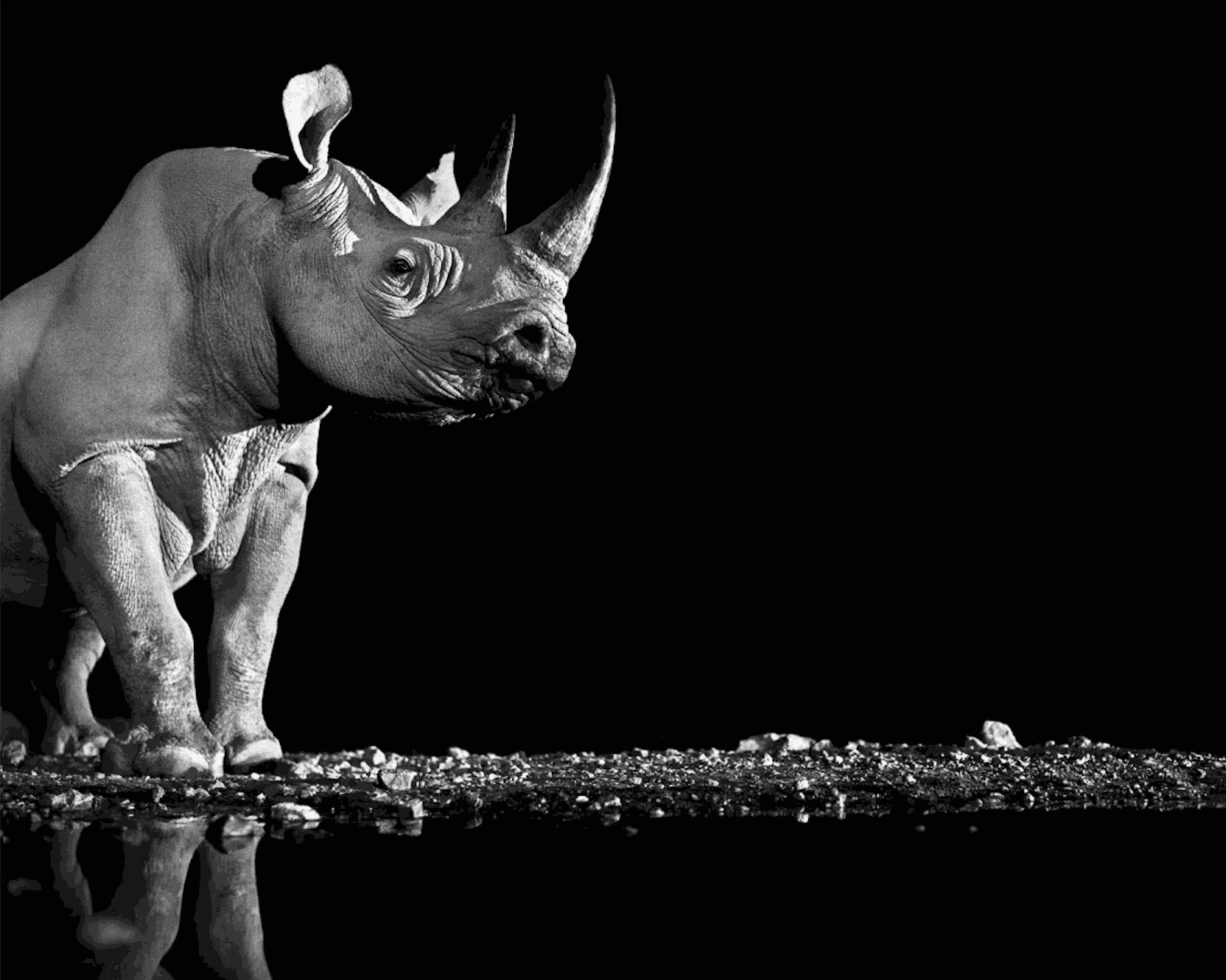
Big; Amboseli, Kenya — David Yarrow's most recent wildlife photographs can be seen in his new book, Encounter. "Amboseli (Kenya) is the best canvas in the world on which to photograph elephants," says Yarrow. "The enormity of elephants can't be conveyed by photographing from a four-wheel drive -- it has to be from the ground."
One thing makes Scottish photographer David Yarrow’s work stand out from a world of wildlife photography – a unique point of view. African elephants tower over you, lions stare balefully into your eyes, tigers look up from the water and rhinoceros charge straight at you. It can be a bit unsettling – this feeling of feeling a little close to the animal. The unusual angles are the result of hours of research and elaborate planning, as well as countless trial and error in the field.

Yarrow’s new book, “Encounter,” gathers 87 of his most stunning images, taken in some of the most remote parts of the world, in the dreariest of seasons, in the most dramatic light.
We spoke with the photographer at a recent exhibit in Hong Kong – where his larger images were selling for more than $15,000 – where he’d come just after a show at the Saatchi Gallery in London.

CNN: What’s been your most gratifying experience in the field?
David Yarrow: With these animals you’ve got to photograph them in a way that they haven’t been seen, or else the shot comes out boring. The shark photo was the result of 30 hours of waiting on a boat deck in Cape Town. It’s impossible to know when the shark will come out of the water, so you have to focus on the baby seals and hope a shark is eying it too.

Sharks only predate out of the water if the waters are calm and they’ll only do it in the first hour after sunrise, and this only happens off Cape Town in July. The first few days I went out, there was nothing. But the belief that you’ll (get the shot), to never give up, is important.
CNN: There’s a shot of a lioness we can’t stop looking at.
David Yarrow: I worked for a long time for the shot of the lioness. We scented the camera casing in Old Spice and she came straight up to the camera.

The Prize; Amboseli, Kenya (SOLD OUT) — To attract a lioness for this shot, Yarrow covered his camera's casing in Old Spice stick aftershave.
Perhaps my most important work in this exhibition is the photograph of the rhinoceros. Rhinoceros have these amazing jawlines that you don’t usually get to see because they are not photographed from angles where you can see them. For this photo I set up the camera in the watering hole, to get this unusual angle, and got this shot at night at 10 p.m. after days of failure.

CNN: How about frightening encounters?
David Yarrow: The only moment of terror I’ve had was when I met a bear in Alaska.
You really aren’t supposed to be on your own, but I was, and it was a big grizzly that had just come back from eating salmon. Thank goodness it wasn’t hungry. You’re told what to do when you meet a bear – you’re not supposed to run away, you’re supposed to talk to them. My heard was pounding so hard and it was difficult to get anything to come out of my mouth but then I started talking. “Hello Mr. Bear, how are you.” And then it just looked at me and walked away.

CNN: What’s your favorite time of year to take pictures?
David Yarrow: It depends on what I am photographing. For Africa, I like to go in October. It’s the end of the dry season and you get these big thunderclouds for a backdrop. You don’t want blue skies when you are photographing – blue skies are boring – and you can’t get these dramatic shots of light with blue skies. I like to go to the Arctic in May and June, when it’s less cold. Not that it’s not cold – I still got frostbite – but it’s better than other months. And then I like to go to Japan in January. I go shoot the snow monkeys.

CNN: Which cameras do you use?
David Yarrow: Nikons – D3S and D800.
CNN: Do you travel alone or with people?
David Yarrow: I go alone. People usually don’t want to go when and where I’m going.
I want to go when it’s raining, and where no one’s around!
CNN: How long does it usually take to get the photograph you want?
David Yarrow: You can’t just show up on Sunday and expect to leave on Monday. After you do all the research, get to know the animals’ habits, then if you turn up on Sunday and get a good picture by Thursday that’s a good job.
CNN: Where do you recommend for safaris?
David Yarrow: The prices tell you everything. I like Botswana, Kenya, Zambia and Namibia. I wouldn’t recommend South Africa. For photographing, I don’t like to go to the parks where they don’t let you get out of the car. You can’t get the good angles if you stay in the car.
